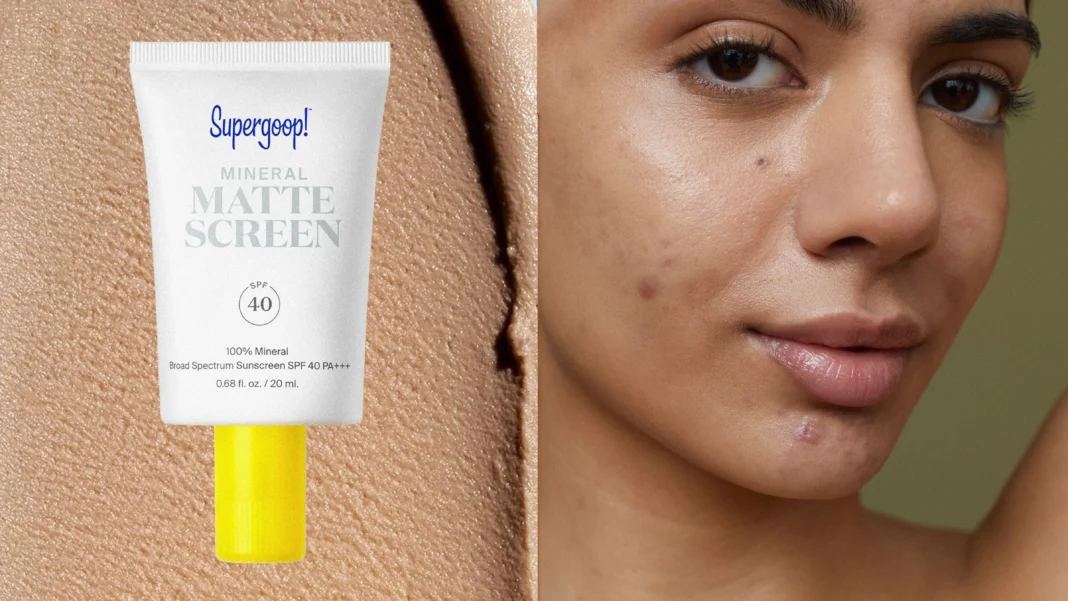Sunscreen is an essential step in every skincare routine, but for many people—especially those with medium to deep skin tones—finding a sunscreen that doesn’t leave a white cast can be a frustrating experience. Traditional mineral sunscreens, while effective, often sit on the skin’s surface and create a chalky appearance. Fortunately, advancements in formulation have led to a new generation of sunscreens that are both effective and invisible on the skin.
In this article, we’ll explore how to choose a sunscreen that won’t leave a white residue, what ingredients to look for, and which types are best for different skin types, including sensitive and rosacea-prone skin.
Why Sunscreens Leave a White Cast
A white cast is caused primarily by mineral UV filters like zinc oxide and titanium dioxide. These ingredients sit on top of the skin and reflect UV rays, which is great for protection but not always aesthetically pleasing—especially on darker skin tones. When these minerals aren’t micronized or properly blended into a formula, they can appear stark white on the skin.
Chemical sunscreens, on the other hand, absorb UV rays and typically don’t leave a visible film, but they may not be suitable for people with sensitive skin or certain allergies.
Types of Sunscreens and Their White Cast Potential
| Sunscreen Type | White Cast Likelihood | Ideal For | Notes |
|---|---|---|---|
| Mineral (Physical) | High (unless tinted or micronized) | Sensitive skin, rosacea | Contains zinc oxide or titanium dioxide |
| Chemical | Low to none | Normal to oily skin | May irritate sensitive skin |
| Hybrid | Low | Most skin types | Combines physical + chemical filters |
If you’re looking for a sunscreen that doesn’t leave a white cast, hybrid and well-formulated chemical sunscreens are often your best options—though there are now tinted or sheer mineral options that perform well without residue.
Key Ingredients to Look For
When searching for a sunscreen that’s both effective and invisible, keep an eye out for these ingredients and features:
- Micronized Zinc Oxide or Titanium Dioxide: Offers mineral protection with less visible residue
- Tinted Formulas: Help blend better with skin tone, especially deeper complexions
- Encapsulated Chemical Filters: Provide high protection with better skin feel
- Hydrating Additives: Such as glycerin, hyaluronic acid, or squalane to prevent dryness
- Non-comedogenic Ingredients: Won’t clog pores or cause breakouts
And if you have sensitive or reactive skin, always look for fragrance-free and alcohol-free formulas to minimize the risk of irritation.
Who Needs White Cast-Free Sunscreens?
While everyone can benefit from an invisible finish, certain groups will find white cast-free sunscreens especially helpful:
- People with medium to deep skin tones
- Anyone wearing sunscreen under makeup
- Men or teens who prefer a natural finish
- Rosacea or eczema sufferers avoiding irritants
- Daily wearers who don’t want a ghostly appearance
Some people with rosacea, for instance, benefit from Fragrance-Free Skincare Products for Rosacea that also include mineral-based sunscreens—but now there are sheer and tinted mineral formulas that work well without leaving a visible cast.
Application Tips for a Seamless Finish
Even the best sunscreen can leave a cast if not applied properly. Here’s how to minimize the risk:
- Use the Right Amount: About a quarter teaspoon for the face alone
- Warm It Up: Rub between fingers before applying to help it melt into skin
- Apply in Layers: Two thin coats often blend better than one thick one
- Wait Before Makeup: Give sunscreen time to absorb before layering other products
- Choose the Right Formula: Fluid or gel-based sunscreens often leave less residue than creams
Top Features of White Cast-Free Sunscreens
Here’s what to prioritize when shopping for a sunscreen with a clean finish:
| Feature | Why It Matters |
|---|---|
| Sheer or Transparent Formula | Reduces visible residue |
| Tinted Option | Helps match skin tone and cancel redness |
| Lightweight Texture | Absorbs quickly, no greasy or heavy feeling |
| Fragrance-Free | Reduces risk of irritation for sensitive skin |
| Broad Spectrum SPF | Protects against both UVA and UVB rays |
| Water Resistance | Essential for outdoor or active wear |
FAQs About White Cast-Free Sunscreens
Q1: What causes the white cast in sunscreen?
The white cast comes from the physical UV filters like zinc oxide and titanium dioxide, especially when they aren’t micronized. Chemical sunscreens usually don’t leave a white film.
Q2: Can people with dark skin use mineral sunscreens without a white cast?
Yes, but it’s important to choose tinted mineral sunscreens or formulas that use micronized zinc oxide. Many brands now offer mineral sunscreens specifically designed for deeper skin tones.
Q3: Are white cast-free sunscreens as effective as traditional ones?
Yes, the appearance of the sunscreen doesn’t affect its ability to protect. Just make sure it’s broad-spectrum and applied in the right amount.
Q4: Is it safe to use chemical sunscreen on sensitive skin?
Some people tolerate them well, while others may react to certain filters. If you have sensitive or rosacea-prone skin, consider a hybrid or tinted mineral sunscreen that blends better but is still gentle.
Q5: What sunscreen works best under makeup?
Look for a lightweight, fluid sunscreen with a matte or natural finish. Many white cast-free sunscreens double as primers, making them ideal for use under foundation or powder.
Final Thoughts
Sunscreen is non-negotiable, but it shouldn’t come at the cost of appearance or comfort. Today’s white cast-free sunscreens offer broad-spectrum protection without the pasty residue of older formulas. Whether you choose a high-tech chemical sunscreen or a well-formulated tinted mineral one, you can protect your skin and maintain a natural look.
For those with sensitive skin conditions like rosacea, combining sun protection with Fragrance-Free Skincare Products for Rosacea ensures both safety and comfort. The key is to choose gentle, non-irritating formulas that suit your skin tone and type—without sacrificing efficacy or aesthetics.


